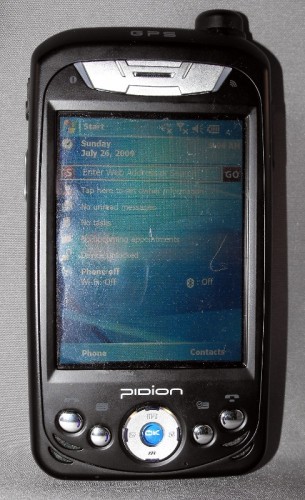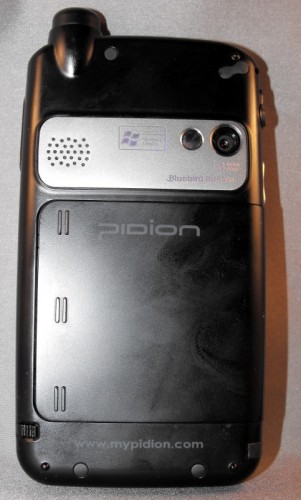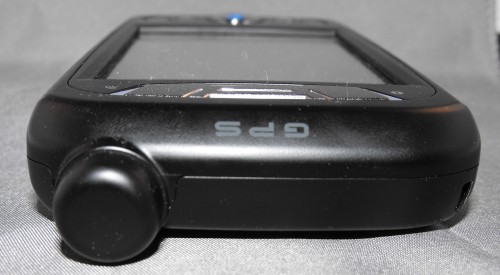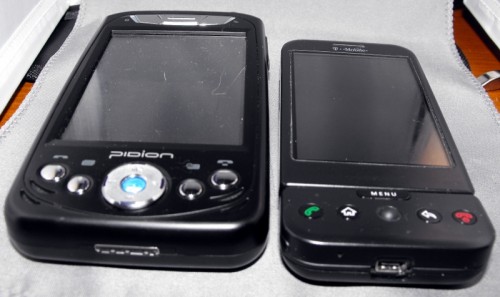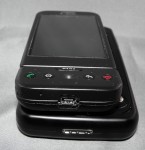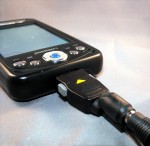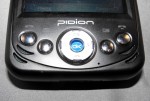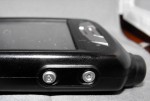It has been a while since I have heard from SDG Systems. Brian Fuller from SDG Systems contacted me about the Bluebird line and offered to send me one to give the once over. I chose the BM-150R which is the closest to what Gear Diary readers may want to carry.
Let me say this up front: the Bluebird line from SDG is all targeted at enterprise users. They are not your typical consumer device. However, this particular device feels like it would be a winner of a device for a carrier if they tweaked out the software load. The reason I say this is that there are people whose work environments are pretty hostile to smartphones. An example of person who might want a rugged smartphone is an auto mechanic. I have many friends who are auto mechanics and in construction work and they regularly kill their cellphones. Most of them have switched to a G’zOne from Verizon since it is rock solid and pretty hard to kill. There really isn’t a great option from the three carriers for a rugged smartphone. There still isn’t, but if someone wanted a smartphone that could take a beating, I would suggest the BM-150R.
Let’s go over the specs for the BM-150R.t
- Windows Mobile 5 or Linux
- GSM/GPRS – optional
- Bluetooth Class II V 1.2
- 802.11 b/g WiFi
- VGA (640×480)
- 128MB RAM, 256MB ROM (OneNAND Flash)
- 3.7V, 1230mAh (2460mAh option), Li-ion battery
- GPS
- 1.3MP Camera
- PXA270, 520 MHz
- USB 1.1 Client and Host
First, the one I was sent is running Windows Mobile 5. The Linux port isn’t quite ready yet. No word on what version of Linux they plan to load on this but I think it will be similar to what the use on the TDS Recon I reviewed earlier. Most of my review will be mainly about the hardware itself. With that said, Windows Mobile 5 is really showing it’s age. It doesn’t look much different than when I ran Windows Mobile 2003 on my HP iPaq 4355 I used to have and it act’s a lot like it too. The only thing I have to say about Windows Mobile is the handwriting recognition is excellent in letter recognizer mode. I almost forgot what it was like to not have a keyboard. With this device, I feel safe to say I would not miss the keyboard.
This phone comes equipped for GSM and has GPRS for data connectivity as well as 802.11 b/g. Since I am a heavy data user, I was really unable to use this slower GPRS data driven phone as a daily driver phone. However, GPRS would work fine for the users I see using this. They would be pretty light data users as it is. Bluetooth worked as it would on most windows mobile devices.
The screen on this is 640×480. That seems to be rare on any device now. The extra resolution makes the screen very readable. I wish someone would put one of these on a Android device!
For memory, it has 128 MB of RAM and 256 MB of NAND Flash. The extra ram as well as the 520 MHz PXA270 CPU means this device is a speed demon! The only time I noticed lags was when using the GPRS connection. Any other time, I didn’t have to wait more than a second for actions to complete. Everything was very speedy. Wifi connectivity was also very good and very appreciated considering the lack of 3G on this phone. If I was always near Wi-Fi, then I wouldn’t care about the lack of 3G.
The battery is a 1230 mAH battery and has a option for a 2460 mAH battery. My best guesstimate of battery life is 4-6 hours depending on how stingy you are with the battery and data usage.
It is also equipped with a 1.3 Mega Pixel Camera. It’s not the greatest camera as most cell phone cameras go but it’s there.
This is a example of a picture taken with the integrated camera.
The integrated GPS worked as advertised. I downloaded and installed Google Maps for Windows Mobile and in my house, it detected my position with 200 meters accuracy. Outside, I was able to find my location to X accuracy.
Also supported, but not tested, is USB 1.1 host mode. I was unable to test this since I did not have the adapter for this device as it does not ship with the device.
Lastly is the ruggedness of the device. This device had no creaks when squeezed and the buttons do not rattle when the device is shaken. While I did not drop the device, it will take a 1.2m drop and will operate in temperatures ranging from -20C to 50C. This is a solid device.
Now that we have established that it is rugged, would you want to carry it? Since it is designed to be rugged, that also means that it is kind of big. People call the G1 a large device. Well, my G1 is easily is a inch to a half inch shorter than the BM150R, a half inch narrower and about the same thickness as my G1. The price of ruggedness it size. It’s hard to protect all of these components without a substantial shell around it. The BM150R has a substantial shell as you can see.
I see restaurants and other places buying these to use as order taking devices. I have seen similar devices from Symbol being used at my local grocery store and this device would be a good fit with the kind of systems they use. If you aren’t a business but would like to order one anyway, SDG would be happy to sell you one for $799.00 on their website. This sounds expensive until you realize that there is no subsidy on this device. It is also unlocked and should work on T-Mobile or AT&T in the states.
What I liked: Rugged! This would be a great phone to take camping or use in a automotive shop.
What needs improvement: The version SDG carries has no 3G connectivity. This is a requirement for all of my future phones. As for the enterprises who may use this device, lack of 3G may not be a big deal.

